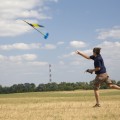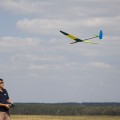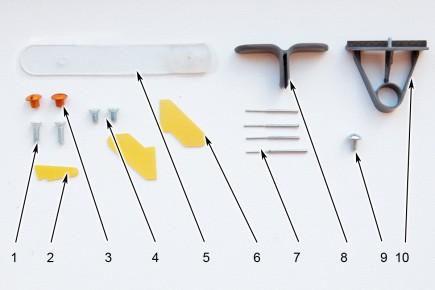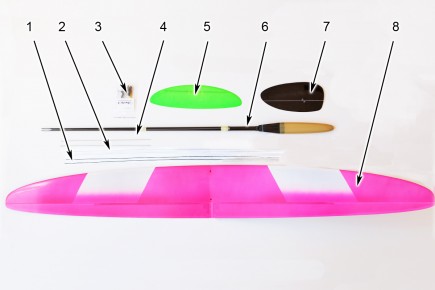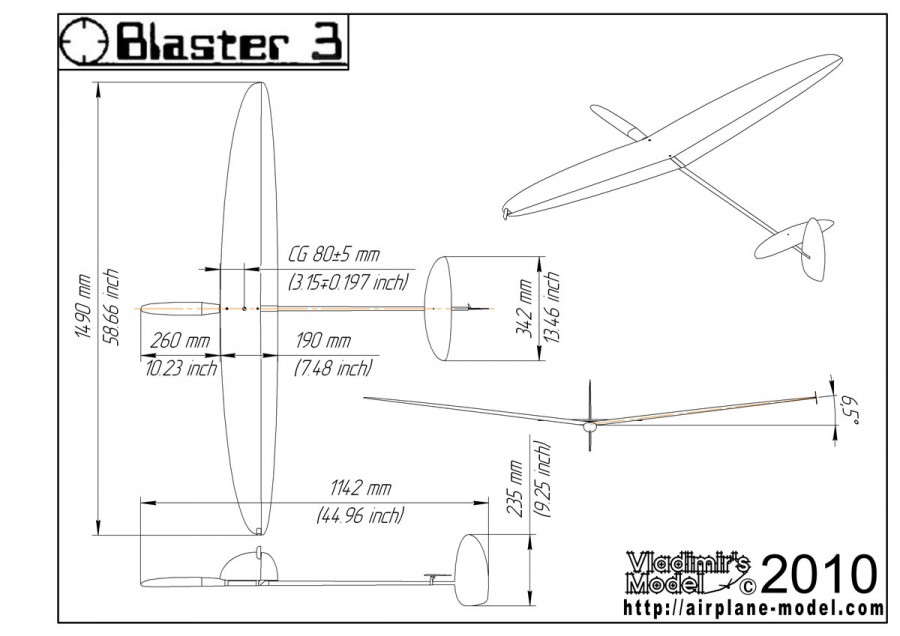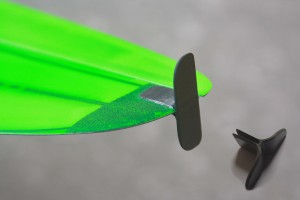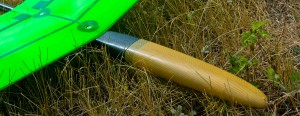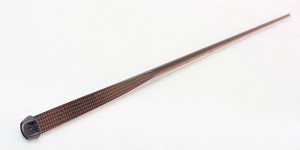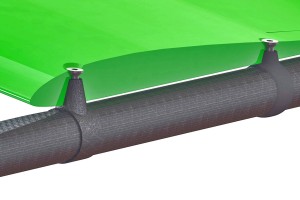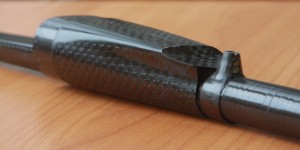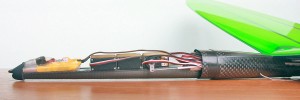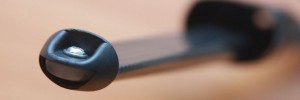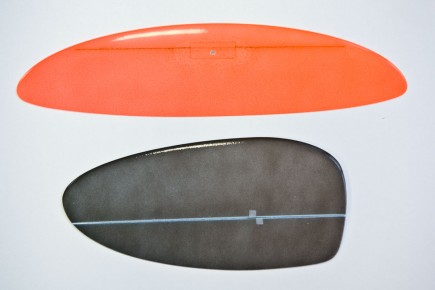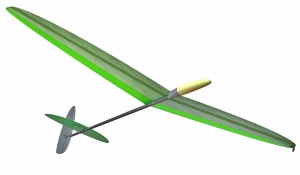Contents of Blaster 3 kit
Contents of accessories kit:
-
Front wing mounting screw M3x8 (2 pcs, one spare);
-
Rudder control horn;
-
Nut for the horizontal stabilizer;
-
Rear wing mounting screw M3x6 (2 pcs, one spare);
-
PP clamp for ballast;
-
Wing control horn;
-
Rudder and elevator pushrods (4 pcs);
-
Launching peg;
-
Screw for fixing PP clamp for ballast (M3).
Contents of part kit:
-
Rudder and elevator pushrods;
-
Bowden tubes for pushrods;
-
Contents of Blaster 3 kit;
-
Aileron pushrods;
-
Stabilizer;
-
Fuselage with nose cone;
-
Vertical stabilizer;
-
Wing.
Recommended equipment, not part of the kit
-
Servos:
JR 285 MG, Futaba S3155, MKS-DS6100, Hyperion DS09-SCD, Dymond D60; Dymond D47 (only for rudder);
-
Recivers:
Spectrum AR6255;
Futaba 6008HS without the case;
Futaba R6106HFC;
Weatronic Clever 6 Receiver 2.4 Dual FHSS.
 BLASTER 3/SNIPE Ballast 60g
Specially for you we make ballast for Blaster 3 weighing 60 grams. In the complete set you receive cargo on a textolite basis, a PP clamp and screw M3. All you need - is to connect the lock and load with duct tape in the area ...
BLASTER 3/SNIPE Ballast 60g
Specially for you we make ballast for Blaster 3 weighing 60 grams. In the complete set you receive cargo on a textolite basis, a PP clamp and screw M3. All you need - is to connect the lock and load with duct tape in the area ... BLASTER 3/SNIPE Ballast 85g
Following your numerous requests we make a heavy ballast for Blaster 3 weight 85 grams. The collected ballast is simply inserted in front of a fuselage into a nasal emphasis on a beam. Insert it while the carving aperture in a ballast clamp will not coincide with an aperture on a nasal emphasis, and then fix screw M3...
BLASTER 3/SNIPE Ballast 85g
Following your numerous requests we make a heavy ballast for Blaster 3 weight 85 grams. The collected ballast is simply inserted in front of a fuselage into a nasal emphasis on a beam. Insert it while the carving aperture in a ballast clamp will not coincide with an aperture on a nasal emphasis, and then fix screw M3... BLASTER Silver Wing Bag
The Wing Bag sewn from polyethylene foam laminate protection fabric. It is glued the logo Blaster and sewn on stickies to secure bags on the wings. In the modified Wings Bags for Blaster has a pocket from Teflon for the stabilizer, which is used by Blaster 2 and Blaster 3. Due to the special valve, your stabilizer is protected from loss and deformation during transportation model.
BLASTER Silver Wing Bag
The Wing Bag sewn from polyethylene foam laminate protection fabric. It is glued the logo Blaster and sewn on stickies to secure bags on the wings. In the modified Wings Bags for Blaster has a pocket from Teflon for the stabilizer, which is used by Blaster 2 and Blaster 3. Due to the special valve, your stabilizer is protected from loss and deformation during transportation model.
Technical data of Blaster 3 DLG |
||||
|
Click on the model name to paint it |
BLASTER 3 Regular Rudderless | |||
|
Аerodynamic parameters |
||||
|
Length |
1142 mm (45 in) |
|||
|
Wing span |
1490 mm (58.6 in) |
|||
|
Wing area |
22.86 dm² (354 in²) |
|||
|
Wing airfoils |
AG 45, AG46, AG47 |
|||
|
Wing aspect ratio |
9,77 % |
|||
|
Stabilizer area |
2.39 dm2 (354 in²) |
|||
|
Stabilizer airfoils |
HT 22 |
|||
|
Stabilizer aspect ratio |
4.9% |
|||
|
Vertical Stabilizer area |
2.13 dm² (330 in²) |
|||
|
Vertical Stabilizer airfoils |
HT12, HT13 |
|||
|
Vertical Stabilizer aspect ratio |
2,6 % |
|||
|
Control surfaces |
Ailerons (flaps), rudder, movable horizontal stabilizer |
Ailerons (flaps), movable horizontal stabilizer |
Ailerons (flaps), rudder, movable horizontal stabilizer |
Ailerons (flaps), movable horizontal stabilizer |
|
Weight characteristics |
||||
|
Fuselage weight (with rods) |
50 gr (1.8 oz) |
|||
|
Weight of the wing |
135 gr (4.8 oz) |
145 gr (5.1 oz) |
||
|
Weight of the horizontal stabilizer |
8 gr (0.28 oz) |
|||
|
Weight of the rudder |
8 gr (0.28 oz) |
|||
|
Details like screws, crevices |
7 gr (0.25 oz) |
|||
|
NT model weight |
208 gr (7.3 oz) |
218 gr (7.7 oz) |
||
|
All Up |
264 gr (9.3 oz) |
249 (8.8 oz) |
274 gr (9.7 oz) |
259 gr (9.1 oz) |
|
Wing loading ( g/dm²) * |
11.5 gr/dm² |
10.9 gr/dm² |
12 gr/dm² |
11.3 gr/dm² |
| Price, EUR |
492,19 € |
492,19 € |
564,47 € |
564,47 € |
* - Depends on the equipment used;
** - Weight of the components depends on the color and the presence of stripes: dark colors are lighter, yellow is the heaviest;
Blaster 3 Flap construktion
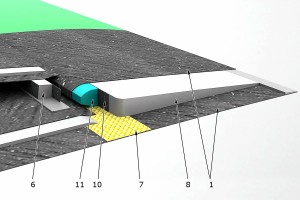
Blaster 3 regular Wing construktion
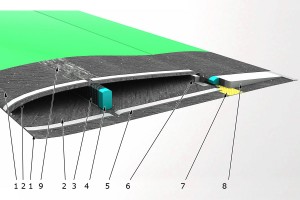
Blaster 3 strong Wing construktion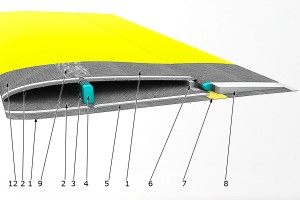
Blaster 3 launch peg
Wing
The Blaster 3 wing is being constantly modified. Here one can see the current (up to date) configuration of the wing.
Blaster 3 Wing construction:
-
outside layers of Carboline:
- Carboline SC_26_2/45 - regular version;
- Carboline SC_39_2/45 - strong version; -
inside layers of Carboline SC_26_2/30;
-
spar shear web of carbon braid;
-
core;
-
ROHACELL sandwich core;
-
rear shear web of ROHACELL and Carboline SC_39_2/45;
-
hinge strip of Kevlar;
-
ROHACELL flap core;
-
spread tow carbon cap strip of the main spar;
-
front flap shear web of Carboline SC_39_2/45;
-
core;
-
additional layer of Carboline (only in strong version) zero degree bias;
Blaster 3 regular
Blaster 3 SC wing suits perfectly both for calm and windy weather. This wing has a total weight of 127-133 grams (depending on color).
We use Carboline SC_26_2/45 fabric for outside layers and Carboline SC_26_2/30 - for inner layers. This allows to obtain very strong and lightweight parts. Due to rigid wing skin the model can be launched 10% higher and is very sensitive to ascending currents. Due to the fact that regular wing Blaster 3 lighter than the previous version of the glass Blaster 3 light wing.
Blaster 3 strong
Blaster 3 strong perfectly suits for windy weather.
There are two features differentiate of Blaster 3.5 regular:
-
outside layers are made of Carboline SC_39_2/45;
-
third longitudinal layer of Carboline, which adds even more strength.
The rigid skin helps to save plane after collisions of the planes in the sky or after rough landings. Igor Butseroga noted that due to extra wing rigidity he has increased stability and height of launch.
The rigid skin helps to save plane after collisions of the planes in the sky or after rough landings. Blaster 3 wing perfectly suits for windy weather.
An icing on the cake makes a convenient launching handle located at wingtip of Blaster 3. You can grind it a bit to make it more comfortable for your personal grip. Then just mark the place where you want to locate it and glue the handle with liquid cyanoacrylate (Super Glue).
Fuselage
The fuselage Blaster 3 represents a seamless carbon construction and radio transparent kevlar nose cone. The fuselage of the most collected. You just have to glue the servos, rudder and to rods.
Tail boom
For the first time, the fuselage does not consist of a separate nose and tail boom. The unique single piece design saves the weight while yielding a stronger structure. The new full length CF tube transfers the load of the ground impact without stressing the nose cone. The wing is attached directly to this tube.
New wing mount
The new wing mount employs the cone shaped mating surfaces, which securely locks the wing on the fuselage even with lightly torqued fasteners. In addition to that, the high stresses of the launch are spread over the large cone surface instead of crush prone bolt holes. The main front mount is made from a high strength carbon fiber with an embedded aluminum washer.
Pylon
The front cross-section of the wing pylon, where the nose cone slides on, is non-circular. This prevents the nose cone twisting by wind gusts, while you are holding the plane by its nose. Inside the pylon comfortably accommodate a receiver, or battery, depending on the chosen center of gravity.
Convenient access
With the nose cone removed, you have an unobstructed access to all the RC gear. This greatly reduces the complexity of the servo and battery mounting, when you are building the glider.
Ballast provisions
The design offers well thought provisions for extra ballast. Inside the fuselage tube just under the RX, there is a special ballast fixing part, which adds only 0.6 g (0.02 oz) to the total weight.
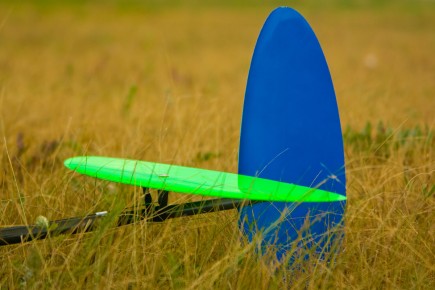
Tail
We changed the length of the beam and the surface of the stabilizer. Thus, we have improved handling and stability when the model turns. The stabilizer and fin are traditionally molded in the most accurate forms of aluminum, as well as a structural foam core is used Rohacell.
Stabilizer is attached with original high-strength carbon parts V-mount, which provides a minimum clearance for movable stabilizer.
Blaster 3 regular and Blaster 3 strong new in 2014. Applying Carboline fabrics could make a light wing construction is extremely tough and rugged. Due to the increased stiffness launch of the model was significantly higher.
The light version of the Blaster 3 - regular wing allows you to win in light wind and a lack of thermals conditions.
Blaster 3 is a long-awaited successor of the award winning line of 1.5m DLG from Vladimir's Model. Blaster 3 is a revolutionary step in development of DLG design based on the experience gained in development and manufacturing of the first two Blaster versions. It meets all the requirements for a competition level glider, while being suitable for intermediate and even inexperienced pilots.
Blaster 3 is designed in CAD from the ground up. It combines unique design, the latest composite materials, the state of the art manufacturing process and careful manual composite layup. Blaster 3's visible simplicity hides its structural sophistication.
Thanks to the advanced aerodynamic design by Dr. Drela and extremely streamlined fuselage, we have developed a uniquely controllable, fast, light, and strong glider with excellent penetration ability.
Technical data of Blaster 3 DLG |
||||
|
Click on the model name to paint it |
BLASTER 3 Regular Rudderless | |||
|
Аerodynamic parameters |
||||
|
Length |
1142 mm (45 in) |
|||
|
Wing span |
1490 mm (58.6 in) |
|||
|
Wing area |
22.86 dm² (354 in²) |
|||
|
Wing airfoils |
AG 45, AG46, AG47 |
|||
|
Wing aspect ratio |
9,77 % |
|||
|
Stabilizer area |
2.39 dm2 (354 in²) |
|||
|
Stabilizer airfoils |
HT 22 |
|||
|
Stabilizer aspect ratio |
4.9% |
|||
|
Vertical Stabilizer area |
2.13 dm² (330 in²) |
|||
|
Vertical Stabilizer airfoils |
HT12, HT13 |
|||
|
Vertical Stabilizer aspect ratio |
2,6 % |
|||
|
Control surfaces |
Ailerons (flaps), rudder, movable horizontal stabilizer |
Ailerons (flaps), movable horizontal stabilizer |
Ailerons (flaps), rudder, movable horizontal stabilizer |
Ailerons (flaps), movable horizontal stabilizer |
|
Weight characteristics |
||||
|
Fuselage weight (with rods) |
50 gr (1.8 oz) |
|||
|
Weight of the wing |
135 gr (4.8 oz) |
145 gr (5.1 oz) |
||
|
Weight of the horizontal stabilizer |
8 gr (0.28 oz) |
|||
|
Weight of the rudder |
8 gr (0.28 oz) |
|||
|
Details like screws, crevices |
7 gr (0.25 oz) |
|||
|
NT model weight |
208 gr (7.3 oz) |
218 gr (7.7 oz) |
||
|
All Up |
264 gr (9.3 oz) |
249 (8.8 oz) |
274 gr (9.7 oz) |
259 gr (9.1 oz) |
|
Wing loading ( g/dm²) * |
11.5 gr/dm² |
10.9 gr/dm² |
12 gr/dm² |
11.3 gr/dm² |
| Price, EUR |
492,19 € |
492,19 € |
564,47 € |
564,47 € |
* - Depends on the equipment used;
** - Weight of the components depends on the color and the presence of stripes: dark colors are lighter, yellow is the heaviest;


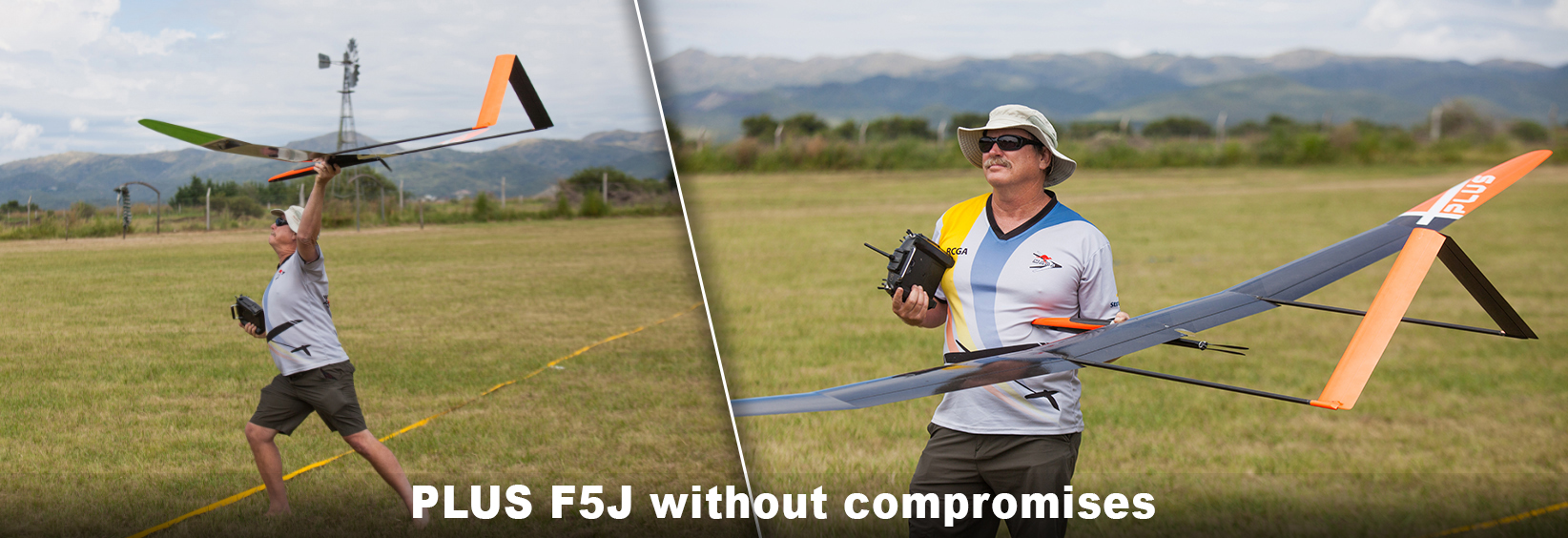
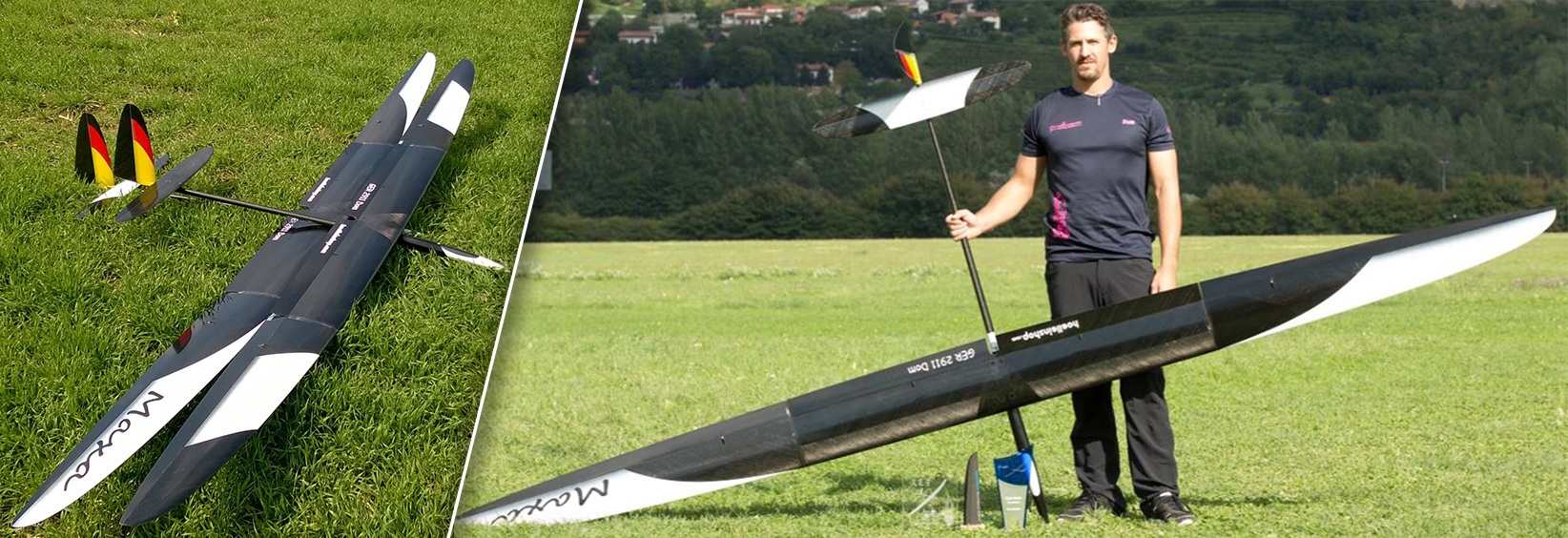
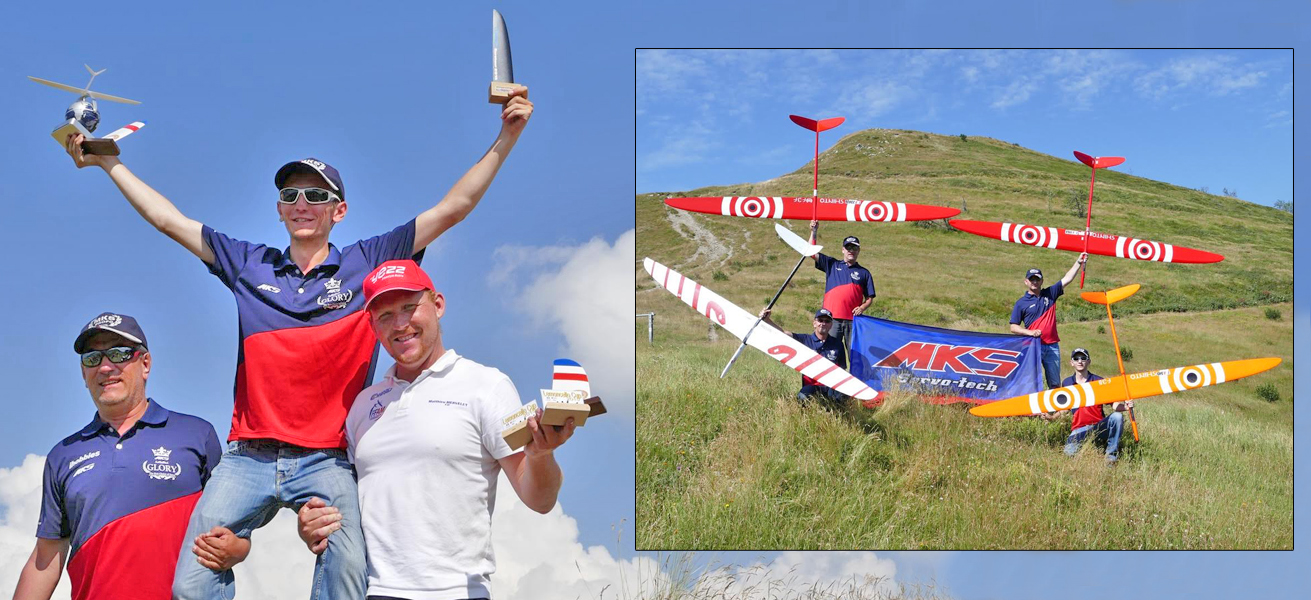


 Top
Top